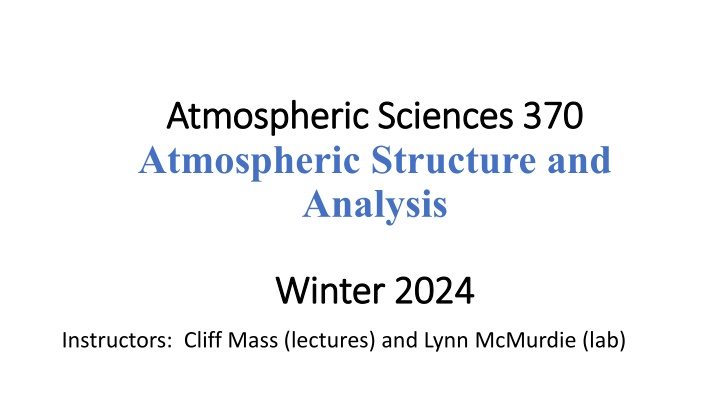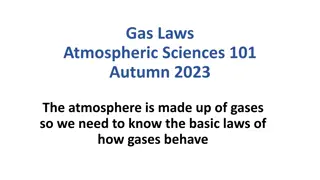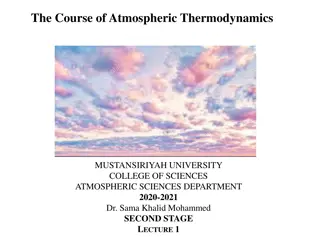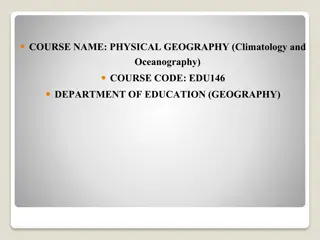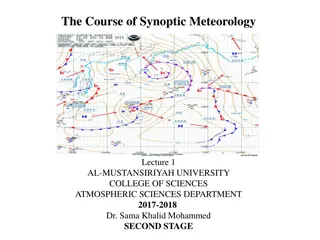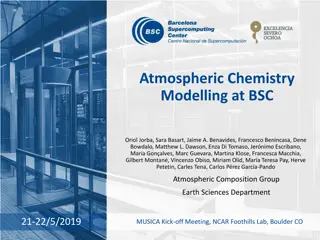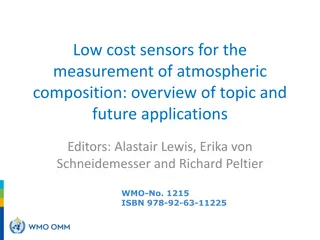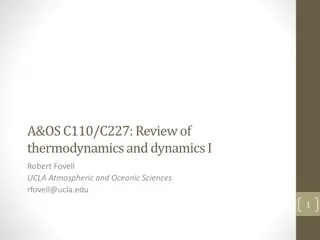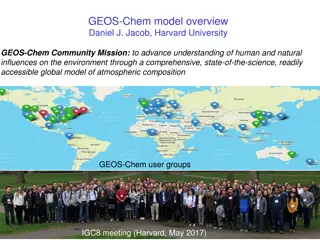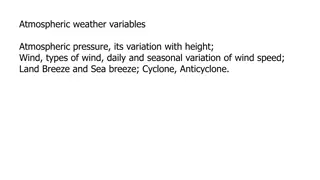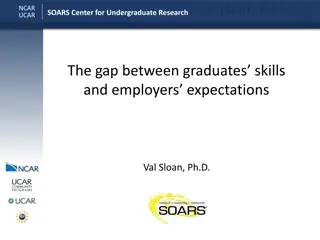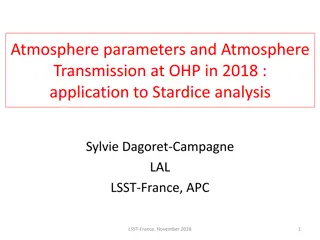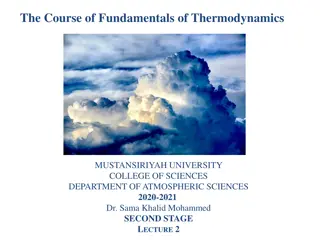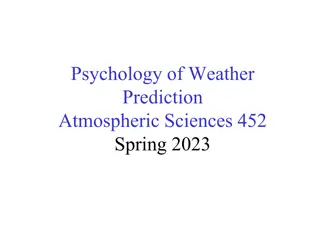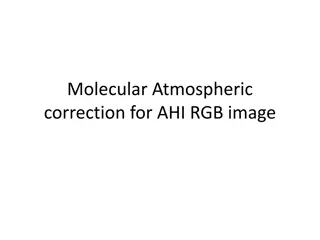Atmospheric Sciences 370
Dive into the world of atmospheric sciences with a focus on synoptic meteorology. Explore the structure and evolution of weather systems, ranging from fronts and cyclones to jets and vorticity. Gain hands-on experience with observational tools, satellite imagery, and radar interpretation essential for weather forecasting. Delve into modern concepts in synoptic structure, numerical weather prediction, and tropical meteorology. This comprehensive course covers a wide array of topics to equip you with the knowledge and skills needed in the field of meteorology.
Download Presentation

Please find below an Image/Link to download the presentation.
The content on the website is provided AS IS for your information and personal use only. It may not be sold, licensed, or shared on other websites without obtaining consent from the author.If you encounter any issues during the download, it is possible that the publisher has removed the file from their server.
You are allowed to download the files provided on this website for personal or commercial use, subject to the condition that they are used lawfully. All files are the property of their respective owners.
The content on the website is provided AS IS for your information and personal use only. It may not be sold, licensed, or shared on other websites without obtaining consent from the author.
E N D
Presentation Transcript
Atmospheric Sciences 370 Atmospheric Sciences 370 Atmospheric Structure and Analysis Winter 2024 Winter 2024 Instructors: Cliff Mass (lectures) and Lynn McMurdie (lab)
Class Goals Gain a basic understanding of the structure and evolution of synoptic systems such as fronts, jets, and cyclones. Develop a better understanding of important dynamical concepts such as thermal wind, wind balances, and vorticity. Develop skills with the basic tools of a synoptic meteorologist such as constant pressure/height charts, soundings, radar and satellite imagery, and interactive analysis. Understand essential elements of weather forecasting. Understand basic elements of tropical meteorology.
1. Weather Observations Lectures: Review of observational platforms used in synoptic analysis. Labs: Access and display of surface, upper air, and satellite observations 2. Review of the Basics Lectures: Geostrophic, gradient, and ageostrophic wind relationships and their application to synoptic analysis. Thickness and thermal wind. Jet streams Labs: Hypsometric lab. Scalar analysis. Upper atmospheric analysis. 500 mb analyses. Thermal wind lab. 3. Basic Conceptional Understanding of Fronts and Cyclones Lectures: Norwegian Cyclone Model, including 3D evolution. Fronts and frontogenesis. Upper-level front origins and evolution. Labs: Frontal and surface analysis. Cross-sectional analyses. 4. Introduction to Weather Satellites and their Imagery Lectures: Hardware description. Basic concepts. Interpretation of visible, infrared, microwave, and moisture imagery. Labs:Analysis of satellite imagery. 5. Introduction to Weather Radar and Its Interpretation Lectures: History of weather radar. Modern radar technology. Doppler and dual-polarization interpretation. Labs: Weather radar interpretation exercises.
6. Modern Ideas on Synoptic Structure and Development Lectures: Shapiro/Keyser model, conveyor belt conceptual models. Split fronts and cold fronts aloft. Three-dimensional airflow in cyclones. Numerical simulations of cyclone/frontal evolution. Vorticity and potential vorticity viewpoints, PV wave-breaking, and tropopause modulation. Labs: Analysis of three-dimensional structures, and trajectory analyses using model data. 7. Introduction to Numerical Weather Prediction and Forecasting Lectures: Major steps in weather prediction. Numerical weather prediction and models. Forecast postprocessing. Approaches to prediction. Labs: Comparisons of weather prediction model forecasts, and forecast exercises. 8. Tropical Meteorology Lectures: Basic characteristics and comparison to midlatitudes. Easterly waves and tropical storms. Streamline and isotach analyses Labs: Satellite interpretation in the tropics. Identification of easterly waves.
The Details Class Times: MW, 1:30-4:20 PM; F 1:30-3:20 PM. Generally: first hour lecture, second and third hours map discussion and lab. Office Hours: Flexible. Email to set up a time. In person, zoom session, or phone. Textbook: Portions of Atmospheric Sciences: An Introductory Survey, by J.M. Wallace and P.V. Hobbs (Academic Press, 2006), COMET METED online modules, and supplementary handouts. Grading: Midterm exam 25%; laboratory work 30%; homework 20%, final exam 25%
Details Often a weather discussion between lectures and labs, with 5-10 minutes of break time between them Labs include BOTH hand analysis and computer-based activities Equipment needed: number two black pencils and an eraser. Red, blue, and purple pencils. Mechanical pencils don t work. Homework every other way to provide more practice with concepts.
Two Online Locations for Class Class website, which included powerpoints used in class: https://a.atmos.washington.edu/~cliff/370.html Canvas website: includes assignments, grades, and more. https://canvas.uw.edu/courses/1695385
